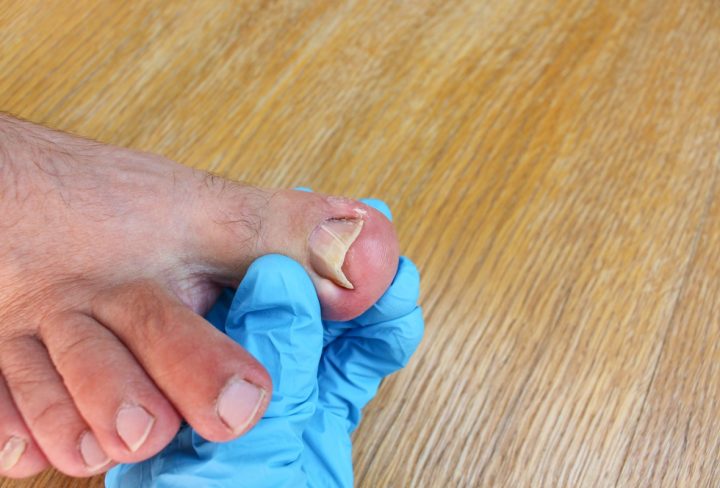An ingrown toenail occurs when the edge or corner of a toenail grows into the surrounding skin instead of growing straight out. It is most common with the big toe but can affect any toe. Ingrown toenails can be painful and tender and cause redness or swelling in the affected area. When the ingrown toenail is left untreated or if the pain and tenderness worsen, it can lead to infection.
Common causes of ingrown toenails include:
- Improper trimming: Cutting the nails too short or rounding the edges can encourage the nail to grow into the skin.
- Tight-fitting shoes: Wearing shoes that crowd the toes can put pressure on the toenails, causing them to grow abnormally.
- Injury or trauma: Stubbing the toe or experiencing repetitive trauma to the nail can lead to ingrown toenails.
- Genetic predisposition: Some individuals may have a genetic predisposition to develop ingrown toenails.
Symptoms of an ingrown toenail may include:
- Pain, redness, and tenderness along the edge of the nail
- Redness and swelling around the affected area
- Increased sensitivity to pressure or touch
- Formation of a pus-filled blister or drainage
- Infection is characterized by warmth, increased pain, and discharge
Treatment options for ingrown toenails include:
- Home remedies: Soaking the foot in warm water several times a day, wearing open-toed or wider shoes, and gently lifting the ingrown edge of the nail with a sterile instrument (e.g., dental floss) can help alleviate mild symptoms.
- Medications: Over-the-counter pain relievers can help reduce pain and inflammation. Sometimes, your doctor may prescribe antibiotics if an infection is present.
- Professional intervention: If the ingrown toenail is severe, recurrent, or associated with infection, seeking professional help from a podiatrist or healthcare provider is recommended. They may perform a minor surgical procedure to remove the ingrown portion of the nail.
Prevention tips for ingrown toenails include:
- Proper nail care: Trim nails straight across, avoiding rounding the edges.
- Wear appropriate footwear: Choose shoes that provide enough room for your toes, and avoid tight-fitting shoes that squeeze the toes together.
- Protect your feet: Take precautions to avoid injuries to the toes and feet, especially during physical activities or sports.
Consult your doctor for an accurate diagnosis and appropriate treatment plan for your ingrown toenail.



